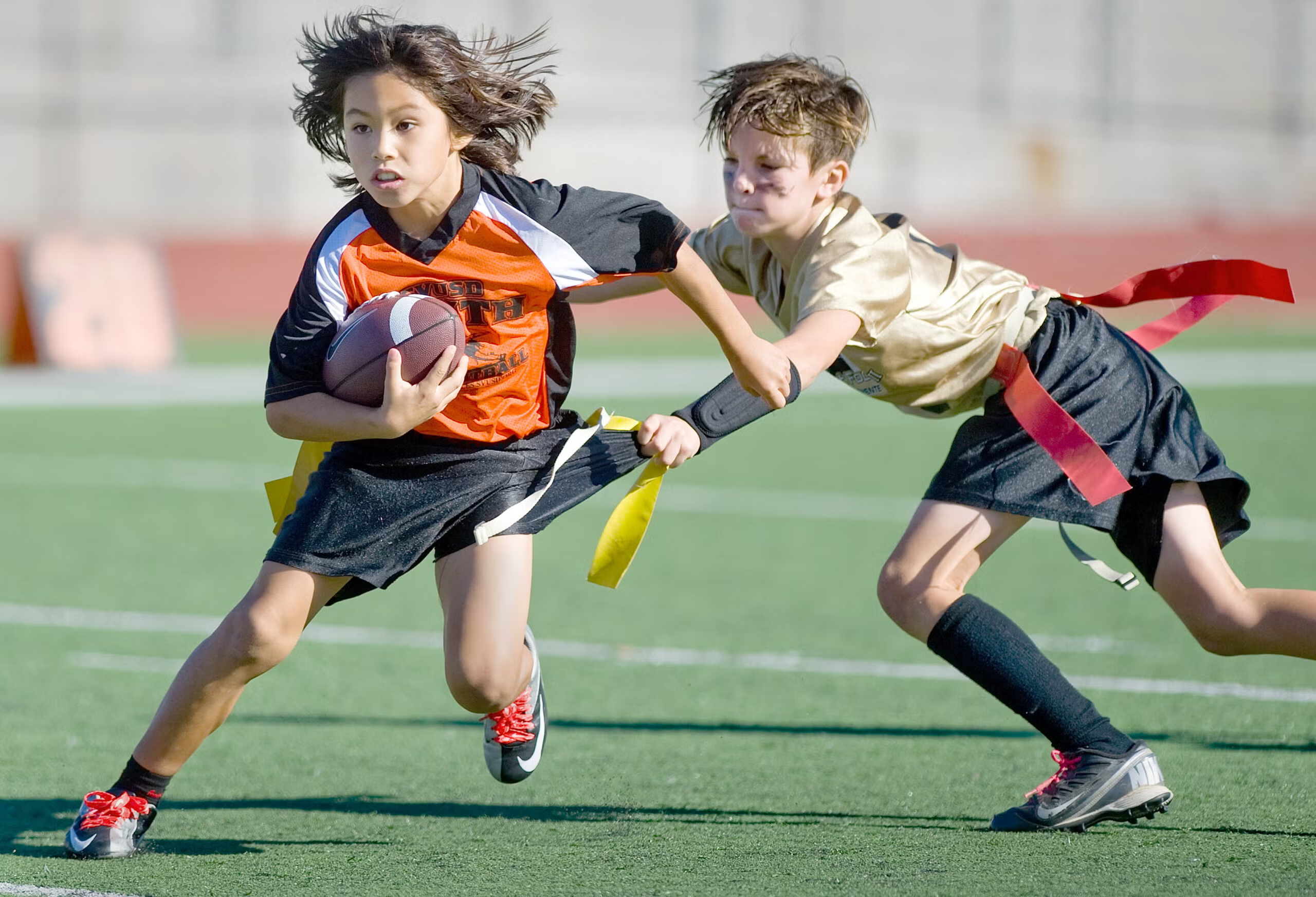Flag football has surged in popularity as a fast-paced, non-contact alternative to traditional tackle football. While the NFL remains the pinnacle of professional football, flag football athletes showcase their own unique skills, athleticism, and strategic prowess. But how do flag football players truly compare to NFL athletes? This article explores the differences and similarities in terms of physical demands, skill sets, training, and overall gameplay.
1. Physicality and Contact: The Biggest Difference
The most obvious distinction between flag football and the NFL is the level of physical contact.
-
NFL: Players endure brutal collisions, requiring immense strength, endurance, and durability. Linemen engage in high-impact blocking, while running backs and receivers absorb hard tackles.
-
Flag Football: With no tackling, the game emphasizes speed, agility, and quick reflexes. Players rely on pulling flags rather than bringing opponents to the ground, reducing injury risk but increasing the need for lateral quickness.
While NFL players must bulk up for power, flag football athletes often have leaner, more agile builds similar to wide receivers or defensive backs.
2. Speed and Agility: Flag Football’s Greatest Asset
Flag football places a premium on speed and change-of-direction ability.
-
NFL Speed: Even the fastest NFL players (like Tyreek Hill) must also be strong enough to break tackles.
-
Flag Football Speed: Since defenders can’t tackle, pure speed and agility are even more critical. Elite flag football players often have lightning-fast cuts and elite acceleration, similar to NFL slot receivers or cornerbacks.
Many flag football stars could compete with NFL players in pure footspeed drills, but the NFL requires a combination of speed, power, and contact balance.
3. Throwing and Receiving: Precision Over Power
Passing in flag football is a refined skill, often more precise than in the NFL due to different defensive rules.
-
NFL Quarterbacks: Must throw with velocity to beat tight coverage and withstand pressure from 300-pound defenders.
-
Flag Football QBs: Rely on quick releases, touch passes, and extreme accuracy because defensive rushers must count before blitzing. Some flag QBs have near-perfect completion percentages in competitive leagues.
Similarly, flag football receivers must have exceptional hands and route-running ability since defenders can’t jam them at the line like in the NFL.
4. Defensive Skills: Reaction Time vs. Physicality
Defense in flag football is more about anticipation and quick reactions than brute force.
-
NFL Defense: Requires strength to shed blocks, tackle powerfully, and press receivers.
-
Flag Football Defense: Focuses on reading the QB’s eyes, breaking on the ball, and pulling flags efficiently. The best flag defenders mirror NFL defensive backs in coverage but don’t need the same physicality.
Some former NFL defensive backs transition well to flag football because of their coverage skills, but the lack of contact changes the approach significantly.
5. Endurance and Conditioning: Different Energy Systems
The conditioning demands vary greatly between the two sports.
-
NFL: Short, explosive bursts with longer rest periods between plays. Players must recover from heavy collisions.
-
Flag Football: Non-stop action with minimal breaks, especially in no-huddle formats. Players need soccer-like endurance to sprint repeatedly without rest.
Flag football athletes may have superior cardiovascular stamina, while NFL players prioritize explosive power and recovery.
6. Strategy and Play Complexity
Both versions of football require high football IQ, but the strategies differ.
-
NFL Playbooks: Hundreds of complex plays, audibles, and adjustments based on defensive schemes.
-
Flag Football Playbooks: Often simpler but rely on timing, spacing, and quick decision-making. Trick plays and misdirection are common due to the fast pace.
Flag football is like a chess match with constant motion, while the NFL is a war of attrition with physical dominance playing a bigger role.
7. Training Regimens: Strength vs. Speed
NFL players spend hours in the weight room building strength, whereas flag football athletes focus on speed and agility.
-
NFL Training: Heavy lifting, plyometrics, and injury prevention due to contact.
-
Flag Football Training: More cone drills, ladder work, and endurance training. Some flag players avoid heavy lifting to maintain quickness.
A flag football player’s workout might resemble that of an NFL cornerback, but without the need for tackling drills or heavy bench pressing.
8. Could Flag Football Athletes Compete in the NFL?
This is a common debate—could the best flag football players transition to the NFL?
-
Yes, in Certain Roles: Elite flag football wide receivers or defensive backs might have the speed and hands to compete in the NFL as return specialists or slot receivers.
-
No, in Most Cases: The physicality of the NFL is a different beast. Flag football players lack experience with blocking, tackling, and absorbing hits.
However, some NFL players (like Antonio Brown and Wes Welker) have backgrounds in flag football, proving the skills can translate in certain positions.
9. The Rise of Professional Flag Football
With the NFL launching its own flag football leagues and the sport being considered for the Olympics, the gap between flag and tackle football is narrowing.
-
Professional Flag Leagues (e.g., NFL FLAG, IFAF): Feature former college and even some ex-NFL players who thrive in the fast-paced environment.
-
NFL Crossovers: Some retired NFL players join flag leagues, showing that the skill sets can overlap later in their careers.
Conclusion: Different but Equally Impressive
Flag football athletes may not have the raw power of NFL players, but they possess elite speed, agility, and precision that rival the best in professional football. The two sports demand different skill sets, but both require incredible athleticism, football IQ, and dedication. As flag football continues to grow, the respect for its athletes will only increase—not as “NFL lite,” but as a distinct and highly competitive sport in its own right.



